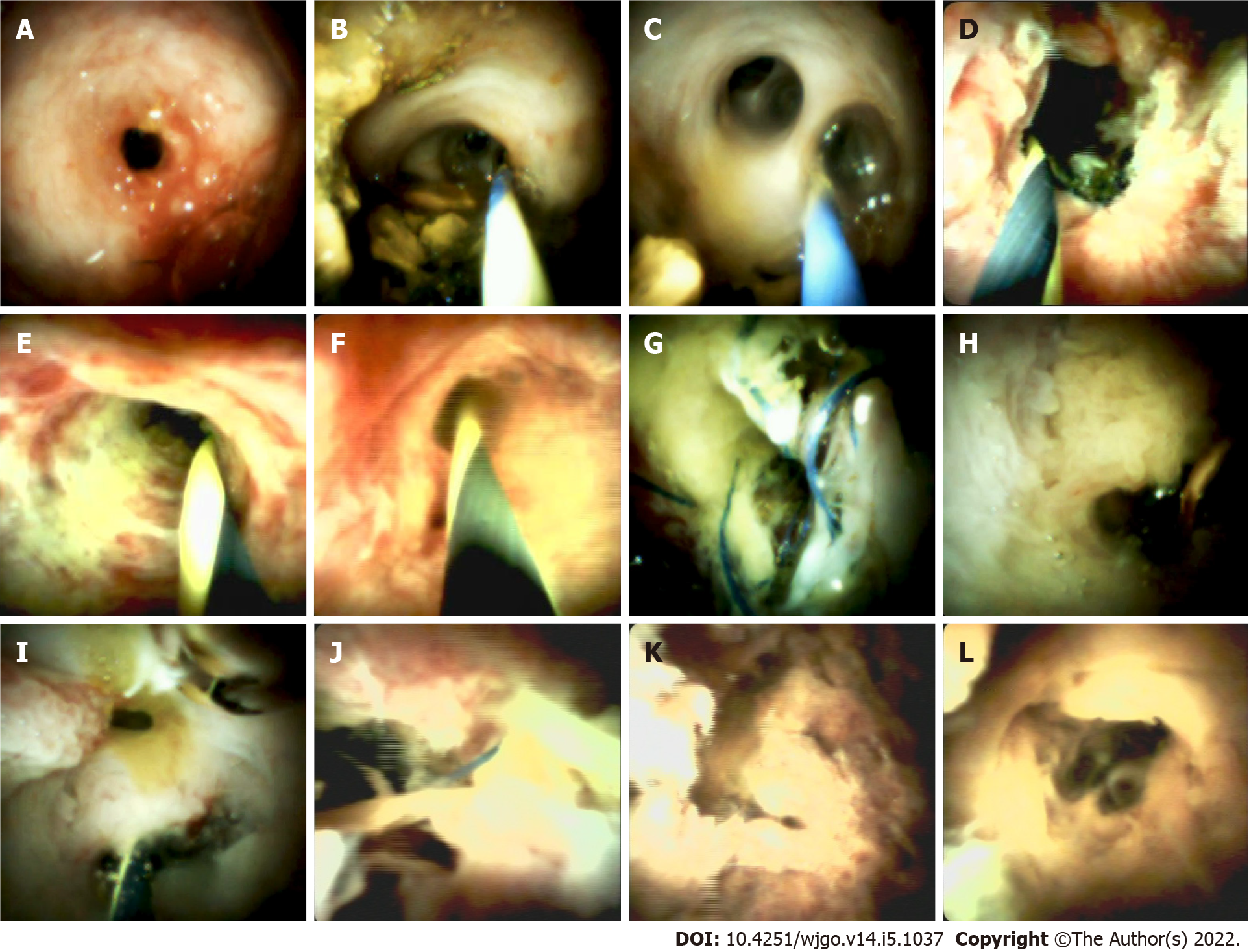Copyright
©The Author(s) 2022.
World J Gastrointest Oncol. May 15, 2022; 14(5): 1037-1049
Published online May 15, 2022. doi: 10.4251/wjgo.v14.i5.1037
Published online May 15, 2022. doi: 10.4251/wjgo.v14.i5.1037
Figure 1 Representative cholangioscopic appearance of the donor bile duct mucosa.
A: Cholangioscopic image of the anastomotic stricture with erythema (Type A); B: Pale smooth mucosa of the donor hepatobiliary duct and dimly visible branching of the submucosal vessels (Type A); C: circular or elliptic opening of the intrahepatic bile duct in the hepatic portal system (Type A); D: Cholangioscopic image of the anastomotic stricture with hyperemia, edema, and polypoid growth tissues (Type B); E: hyperemia mucosa of the donor hepatobiliary duct with longitudinal ulcer (Type B); F: hyperemia mucosa of the intrahepatic bile duct in the hepatic portal system (Type B); G: Cholangioscopic image of the anastomotic stricture with sludge and suture (Type C); H: Deformed intrahepatic bile duct opening and granular mucosal surface without vessels (Type C); I: the villous mucosal surface of intrahepatic ducts (Type C); J: Cholangioscopic image of the anastomotic stricture with necrotic material and suture (Type D); K: The wall of intrahepatic bile duct with a mass of necrotic material (Type D); L: Deformed intrahepatic bile duct opening with necrotic material (Type D).
- Citation: Yu JF, Zhang DL, Wang YB, Hao JY. Digital single-operator cholangioscopy for biliary stricture after cadaveric liver transplantation. World J Gastrointest Oncol 2022; 14(5): 1037-1049
- URL: https://www.wjgnet.com/1948-5204/full/v14/i5/1037.htm
- DOI: https://dx.doi.org/10.4251/wjgo.v14.i5.1037









